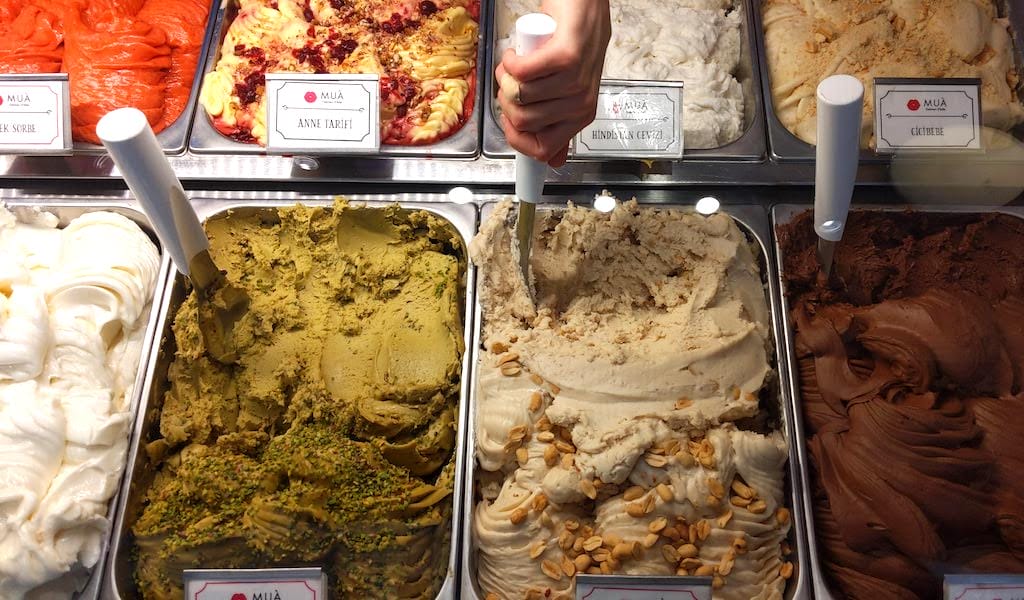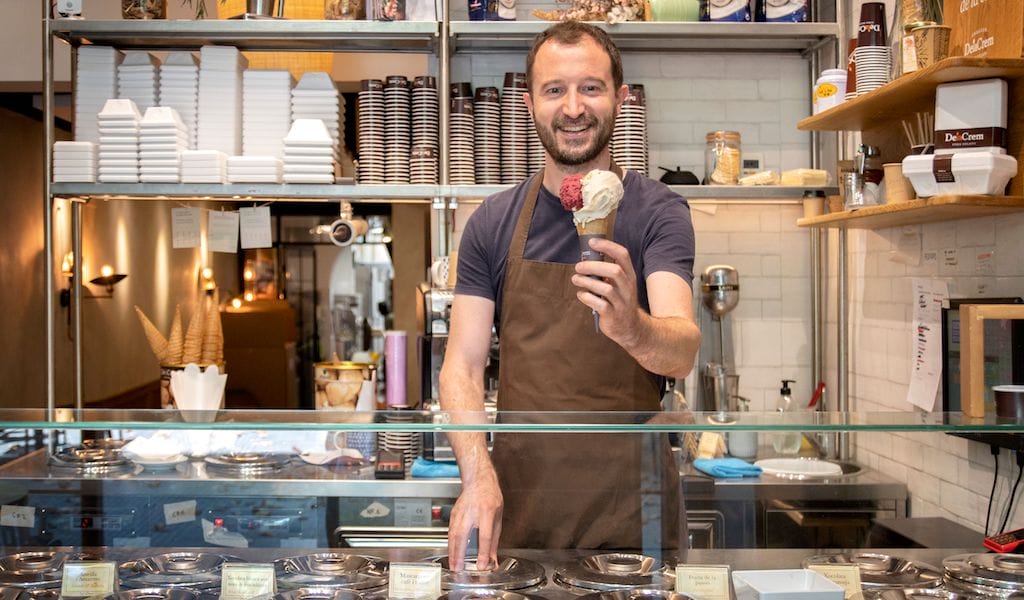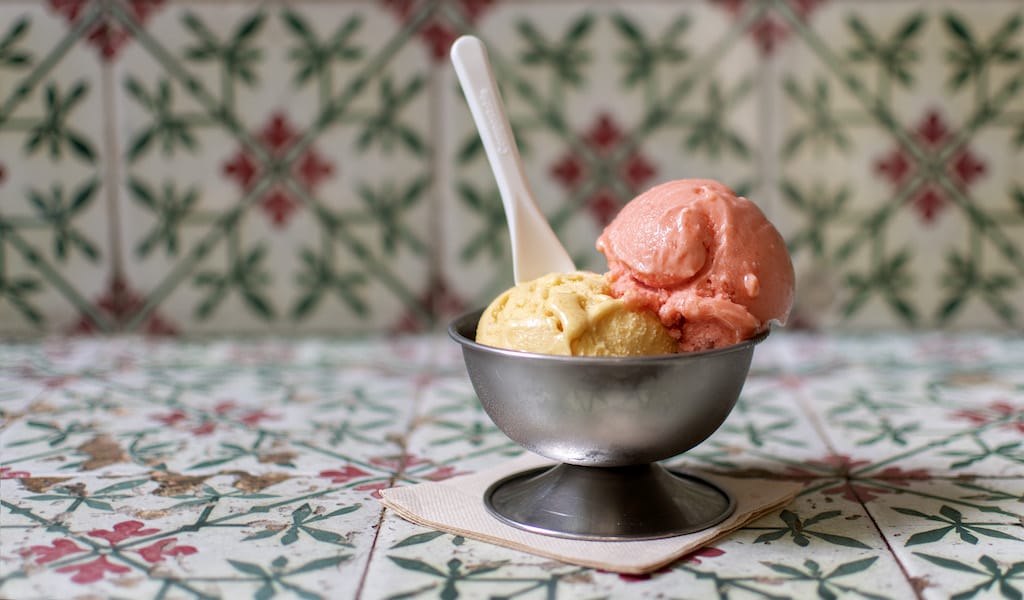Naples’ Forcella district is known throughout Italy for the starring role it plays in the drama that is the city’s underworld; many Camorra (Neapolitan mafia) members call the neighborhood home. Today, this district is experiencing a moment of redemption both artistic and cultural. The former can be seen in the murals and old, repurposed cinema houses, which have become venues for art exhibitions. The latter has unfolded with the renovation and reopening of the 110-year-old Trianon Viviani theater, which is focused on putting “Canzone Napoletana” – Naples’ homegrown musical genre – back on the map.
But for many, Forcella is famous for being home to another Neapolitan institution: Gelateria Al Polo Nord. The gelateria, a neighbor of the Trianon theater, has been a tradition for four generations, and it was common for theater-goers to stop by the ice cream parlor for its smooth, delectable gelato or a carton of their famous spumone. Today, the parlor is a popular destination for Neapolitans from across the city.
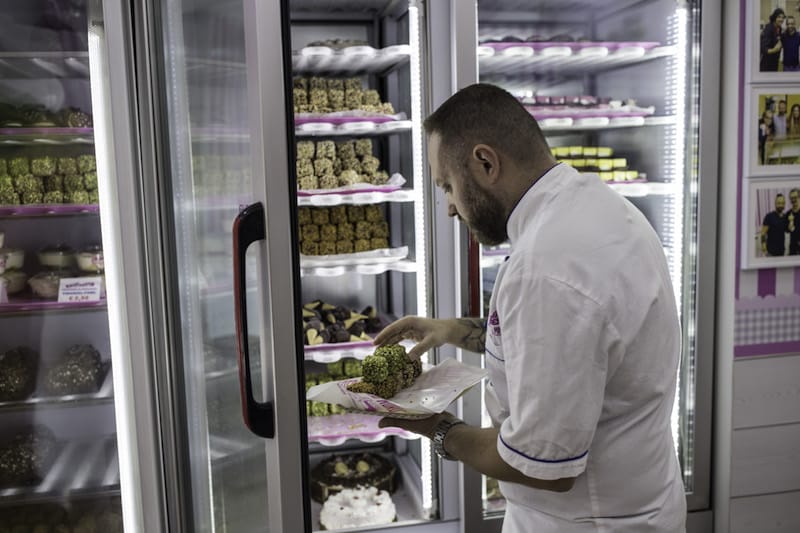
Now when it comes to Naples’ ice cream history, sorbet, simply made with ice, sugar and lemon, was born first. In previous centuries, the ice was taken from the heights of Mount Vesuvius (the paradox being that this volcano also served as a Neapolitan freezer), where in winter locals would store ice in the mountain’s cracks, and bring it down for use in summer. By the 1930s, though, as refrigeration became more widespread, gelato entered the picture, becoming an almost daily treat for Neapolitans.
One person who capitalized on gelato’s growing popularity was Antonio Raio, who founded Polo Nord in 1931 after learning the trade in a shop in Castellammare di Stabia, a town some 30 kilometers southeast of Naples. After World War II, Antonio’s son Guglielmo took over the gelateria, and eventually passed it down to his own son Giuseppe (who is now 72) in the 1980s. Polo Nord is now run by the fourth generation of Raio family gelato makers, Guiseppe’s 42-year-old son Antonio.
Next to the parlor are two cult Neapolitan pizzerias. One is Antica Pizzeria da Michele, which became a destination after being featured in the bestselling novel “Eat, Pray, Love.” Then there is Pizzeria Trianon, one of the most iconic in Naples; it’s three floors of pizza paradise. Obviously, gelato has always made for the perfect “after pizza party,” even in winter. For a quick post-pizza dessert on-the-go, Polo Nord’s handmade cones make for great accompaniment to their impeccable gelato. “We were the first to make ice cream cones in Naples, and then we were imitated by all the other Neapolitan ice cream makers!” Antonio tells us.
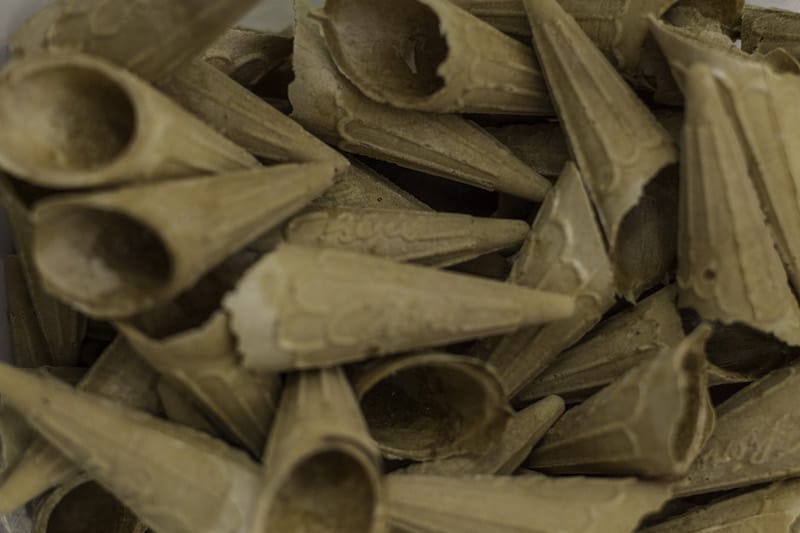
On a recent visit, we counted 42 different flavors on offer in the gelateria window. “But, many more flavors are produced here,” Antonio reminds us. The best-selling is without a doubt hazelnut, followed by Kinder (a common flavor in Italy that combines the hazelnut and chocolate of the Kinder candy bar) and the simple chocolate coming in third. For us, fruit flavors aren’t as enticing as the nut and cream-based divinities, but strawberry and lemon are two musts here.
The hazelnut gelato is made with a native variety called Avellana, grown for centuries in the area around the city of Avella, a 30-minute drive from Naples. In Latin, hazelnut was known as “nux avellana” and still today in Spanish the word for it is “avellana,” and “avelà” in Portuguese. Throughout the 19th century, the Neapolitan hazelnut was considered to be the best in Europe, so much so that when the Austrian Josef Manner developed the wafer in the 1890’s, the hazelnut flavor was called the “Neapolitaner.”
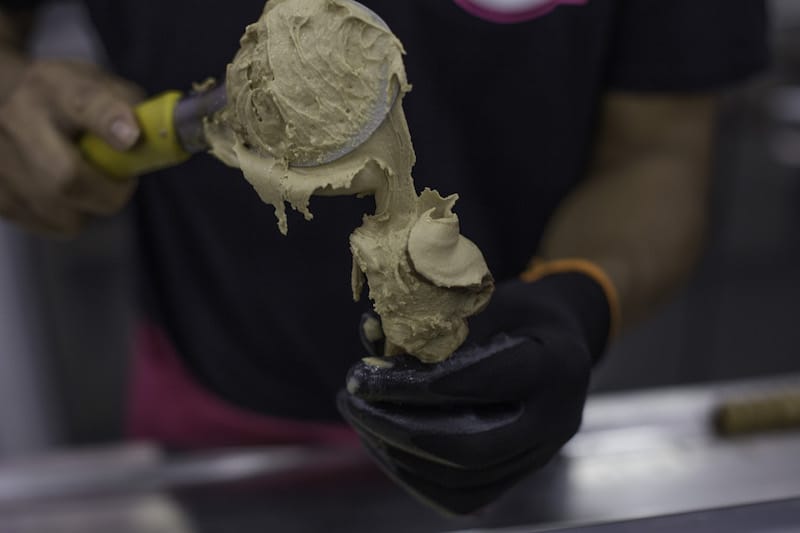
Besides the hazelnut gelato, there’s another timeless classic at Polo Nord: the spumone. For many Neapolitans, to speak of spumone in Naples is to talk about the spumone of Antonio’s family, still made entirely by hand. This colorful mix of gelato and semifreddo (different from gelato in that it contains less water and is frozen at a higher temperature, resulting in something more like a frozen mousse) is brought out on weddings and other important occasions. Generally, a spumone contains candied fruit and nuts between layers of ice creams mixed with whipped cream. Its most well-known and patriotic combination of flavors includes pistachio, cherry and vanilla, making up the tri-colors of the Italian flag (though chocolate often takes the place of vanilla). Those in the US may be more familiar with the Americanized version of spumone, popularized in the 1870s. Called Neapolitan ice cream, it is a big block of chocolate, strawberry and vanilla ice cream.
“We still use the same steel molds for the spumone that my great-grandfather used,” says Antonio. “First, a gelato crust is made inside the container, and then a depression is dipped out by hand to create a heart of semifreddo.” Spumone is traditionally sold in chunks and eaten at home, where it is cut into four large slices. “This was the first gelato shop opened in Naples,” Antonio tells us, “and spumone could only be found here. For many years, this gelateria has been the training ground for all the great Neapolitan ice cream makers.”
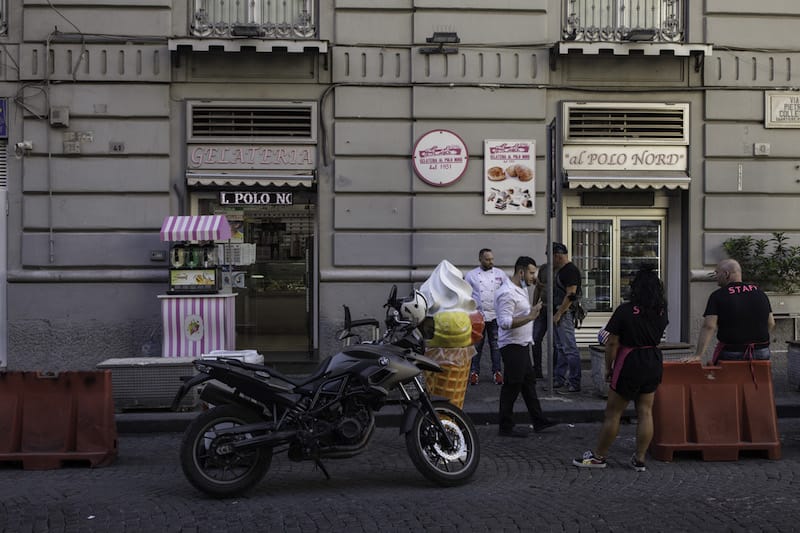
Another historic ice cream at Polo Nord is coviglia, a single-portion semifreddo. It is an old-school frozen dessert made with the same semifreddo at the core of the gelateria’s spumone, with the addition of a little sponge cake. “Even the coviglias are shaped like my great-grandfather’s,” Antonio says.
For almost a century, there have been incessant comings and goings to the parlor, mostly Neapolitans in search of the legendary spumone of Polo Nord. In the refrigerators, however, we can see a new addition: the sanpietrino (cobblestone), a cube-shaped ice cream treat born in 2017. Antonio wanted to invoke the idea of both ice cubes and the cobblestones that are the foundation of Neapolitan streets. Crunchy on the outside, it has a soft semifreddo heart, just like the spumone. Antonio tells us that the best seller is the Amarena cherry, followed by the hazelnut, then pistachio.
On this day, it was the caramel “cobblestone” that called our name, its fine golden glaze giving way to the creamy semifreddo center. Like everything else at Polo Nord, it was as good as it looked.
Published on August 25, 2021
Related stories
August 27, 2021
IstanbulIn these days of viral Instagram videos and WhatsApp chainmail, Turkish ice cream has become synonymous with fez-clad pranksters swooping and slinging a mound of sticky Kahramanmaraş dondurma (ice cream) out of the hands of questionably amused tourists. But Turkey’s dondurma tradition goes far beyond these attention-seeking tricks. Beloved institutions offering more than simple (though…
August 24, 2021
BarcelonaGenerations of inhabitants of the modern-day Italian peninsula may have learned the art of aromatized ices and frozen fruits and puddings from the East (China, Persia, etc.) – perhaps it was the Ancient Romans or Marco Polo or the Crusaders who introduced some variation of these cold treats. But it is the Italian Francesco Procopio…
August 10, 2021
BarcelonaMy memories of helados (ice cream) as a kid in the small Galician town of Vigo in the 80s are mostly of the signs outside kiosks advertising Colajets (a cola and lemon flavored popsicle) and Frigo Pies (strawberry ice cream shaped like a foot) – colorful, industrial fantasies on a stick. The quality ice creams…















































